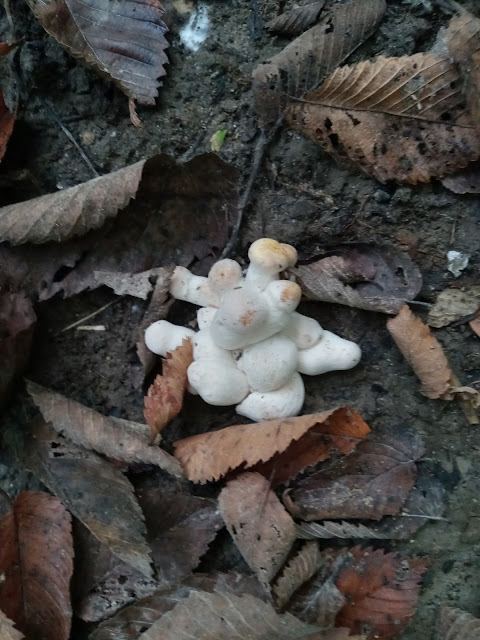Entoloma abortivum occurs in two forms: The first is the regular cap-and-stem mushroom, typically brown and dry with close, decurrent gills and a salmon-colored spore print. The stem is smooth and often enlarged at the base with mycelial threads. It has a pungent, sweet, mealy odor. Another key feature is the sharp distinction between the white interior flesh and the brown cap and gills. The second form (called Shrimp of the Woods) is globular. Sometimes it looks like garlic cloves; sometimes it's more pitted and uneven. This second form is parasitic on honey mushrooms. I was fortunate enough today not only to find both forms but to find the parasitic form growing with some honey mushrooms too. (See the third and fourth photos.)
Both forms are edible.
Both forms are terrestrial. Last year, I found several Shrimp of the Woods lying on logs throughout our woods. I assume they were placed there by squirrels to dry.





